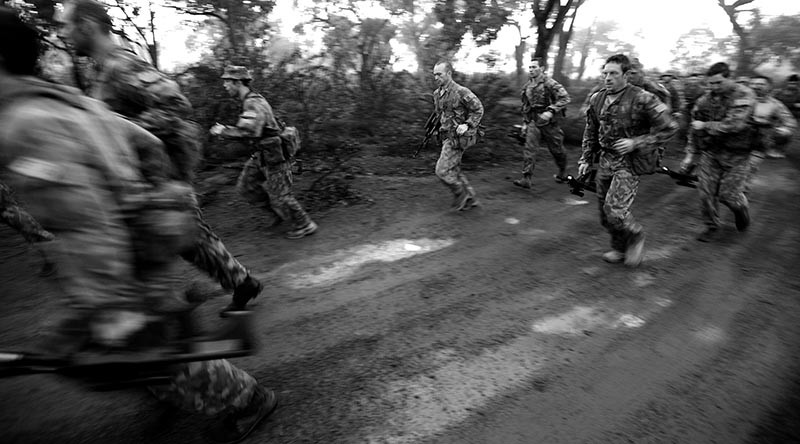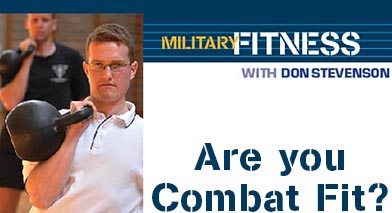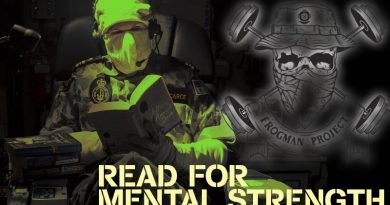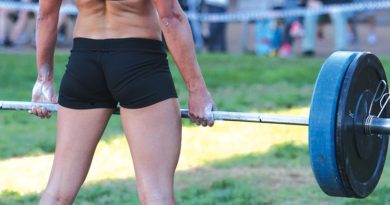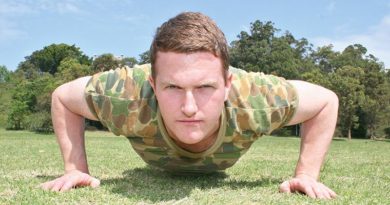Military Fitness – Part 1

Hello and welcome to CONTACT’s first fitness column.
In this column I’ll be covering a range of topics relating to military fitness in the barracks and in the field.
My aim is to provide information that will assist both current and prospective military personnel develop a high level of fitness and resistance to injuries. This column will at times push the boundaries of conventional fitness wisdom, but I assure you all the advice I give has been tested by military personnel both in Australia and overseas and I never recommend a training program or method without trialing it on myself first!
In this instalment we’ll take a look at a number of common (and not so common) fitness programs and see how they shape up against the fitness needs of military personnel.
 Couch to Commando by Don Stevenson is a 165-page e-book with programs in 6 different levels to progress anyone from couch potato to commando candidate.
Couch to Commando by Don Stevenson is a 165-page e-book with programs in 6 different levels to progress anyone from couch potato to commando candidate.
20% of proceeds from the sale of this e-book will be donated to Soldier On
Fitness needs of military personnel
Unlike the average exerciser, military personnel have a highly specific set of fitness requirements that are rarely met by mainstream fitness programs. Where the average gym user will be happy with looking good on the beach, a soldier, sailor or airman can’t afford to let vanity guide their fitness program.
The demands of military training and operations require a set of fitness goals that are far removed from the common goals of Herculean muscle mass, marathon aerobic capacity and yoga-level flexibility.
Military operations offer a randomised mix of challenges, which are largely anaerobic, involve the whole body and which are often carried out under load and repeated rapidly in a short timeframe.
Military tasks seldom demand long aerobic efforts or isolation of specific muscle groups. Therefore the goals of a military fitness program in order of importance are:
- injury prevention – posterior-chain strength, core strength and flexibility;
- work capacity – the ability to perform as much work as possible in a given time;
- maximal strength – the ability to handle heavy loads;
- speed and power – the ability to move fast and with force; and,
- cardiovascular endurance – a low priority.
Pitfalls of common training programs
Having outlined the demands of military fitness and defined the goals of a military fitness program, it should be fairly obvious to see that many popular fitness programs fail to address the unique needs of military personnel.
Listed below are some common training methods and the reasons they aren’t suitable for military personnel. Most personnel use a combination of these methods in varying forms.
Bodybuilding programs
Bodybuilding programs are a very poor choice for military personnel. Combat does not offer up sets, reps and rest intervals and the enemy is not interested in how big your biceps are.
The fundamental problem of bodybuilding is an emphasis on looks over functionality and a complete disregard for injury prevention.
Bodybuilding aims to build up the individual parts of the body without regard to strengthening the core and posterior chain (glutes, hamstrings, lower back) and it is these areas that are placed under the most stress by military tasks.
Long-distance running
While everyone would agree that running is an important military skill, the pursuit of aerobic capacity is often taken too far.
The reality is that most running in combat is carried out over short distances and in repeated bouts.
To train for these repeated sprints, long-distance running just will not do the job.
Circuit training and unit PT
These types of training come a lot closer to achieving the goals described above.
Circuits and PT generally develop work capacity and endurance, but more often than not there is little variation in load or intensity from week to week and therefore they miss out on developing maximal strength.
So what’s the solution?
Recently there have emerged a number of fitness programs that are ideally suited to the needs of military personnel and that address all of the requirements described above.
I’ll briefly describe these programs here and, over the next few articles, I’ll expand on each one.
Each of these methods has been used extensively overseas and adopted by units such as the US Navy Seals, Rangers, SWAT teams and Marines.
Kettlebell training
Using a weight shaped like a cannonball with a handle on top, kettlebell training has been used in the Russian army for years and is now being used in the US and Australia by people who need to develop extreme levels of fitness in the minimum possible time.
Kettlebell training is divided into two main areas:
- Pressing and core drills, which develop maximal strength, injury resistance and core stability; and,
- Ballistic drills, which develop work capacity, endurance, speed and power.
This powerful combination prepares kettlebell users for a wide range of situations and, as an added bonus, instead of a room full of equipment, all you need is a single kettlebell to achieve all these benefits.
This makes kettlebells an ideal way to stay fit while deployed.
Crossfit workouts
Crossfit is another unique training program that has proved to be far superior than traditional methods for developing combat fitness.
Numerous police, firefighters and military personnel from the US have adopted crossfit over the past few years and all of them attest to its efficacy.
Crossfit takes a huge range of exercises from Olympic weight lifting to running to gymnastics to bodyweight exercises, and distills them into a series of potent workouts that develop all of the components of fitness.
Crossfit uses a lot of common gym equipment and is therefore a good choice for training while in barracks or in preparation for joining the Australian Defence Force.
Conclusion
The demands of military fitness are highly specific and are poorly served by common training programs found in commercial gyms or men’s magazines.
For developing optimal combat fitness you need a program that more closely relates to the demands of operations and training.
For more information on military fitness programs, kettlebells and crossfit, stay tuned to this series of articles in CONTACT, collated here.
.
.

.
.

